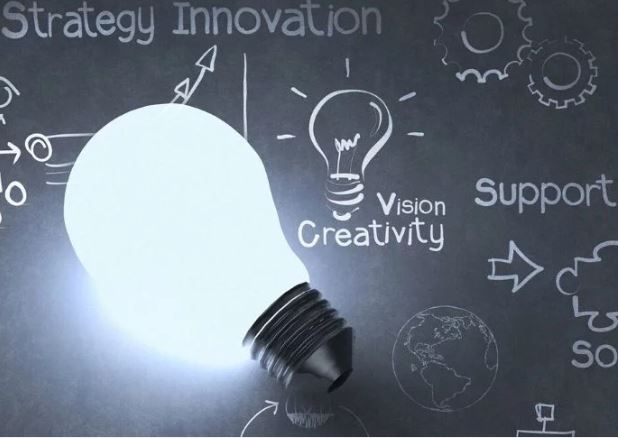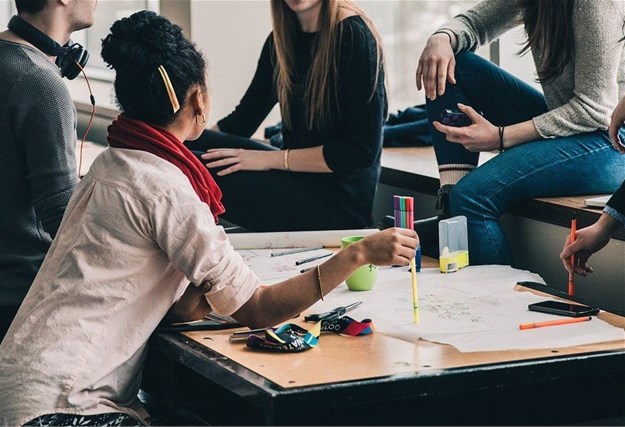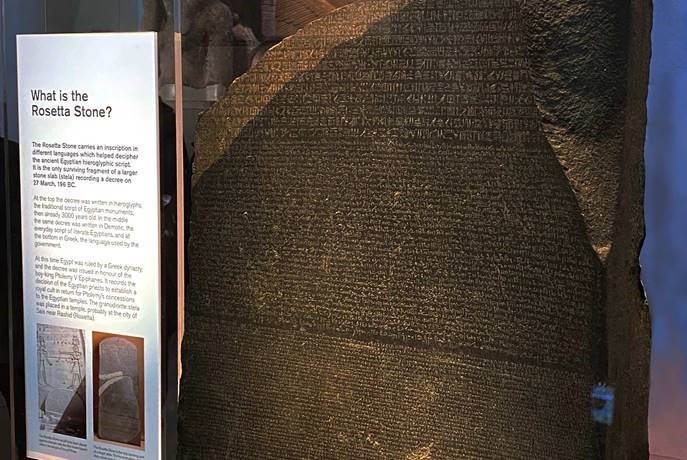
Learnings from an edtech show
19th February 2020
Via Afrika 4IR training course launched
5th March 2020I was recently fortunate enough to be in London and being a typical South African having to live with an exorbitant exchange rate, I found myself having to go to the various free museums available. Fortunately, there are many.
I started my explorations at the British Museum, where the Lonely Planet guidebook had told me that what I should not miss the Rosetta Stone, the Mummy of Katebet and the marble Parthenon Sculptures.
When I came upon the crowds around the Rosetta Stone, I was amazed at how big it is. When I learned abut it in Standard 4 in the 1970s it seemed so much smaller because of the way it was shown in the textbook.
The Rosetta Stone has a text written in Ancient Greek and the Demotic scripts which historians could already read when they discovered it, and then the same text in Egyptian hieroglyphs which they could not read.
This opened the whole ancient Egyptian world to scholars. On my way to the mummy I accidentally came across a full Japanese Samurai Warrior suit of armour, and many other beautiful artefacts.
None of this had been mentioned in the guidebook! There was also a fascinating looking exhibition, ‘Troy – myth or reality’, in the museum – but this required an entrance fee of 20 pounds (about R340 or a meal out) – which I did not visit.
I left not having seen about 95% of the museum.
There are about 8 million things in it and much of it did not interest me directly. By that point, I just couldn’t absorb more history, and frankly I could not walk anymore.
As I was walking away from the museum, I was struck by how similar my experience is to teachers who are wanting to use technology in their classes.
Finding the right information
Because teachers wanting to use technology in their classes are like tourists in a new place, they rely on ‘guidebooks’ in the form of computer hardware and software sellers. While these sellers are experts in their fields, like my guidebook, they are going to reduce the offering that is available quite a bit to keep things simpler.
What’s more, just as my guide is aimed at a younger backpacker market whereas something like Frommers is aimed at an older wealthier market, the sellers only provide information that is useful to them.A teacher relying exclusively on this source of information is going to miss out on a lot of the good stuff.
Is it really free?
As teachers, we often go for the free stuff to save money. Often this is very useful, as we can see with the Google software that is availed.
But technology companies invented the freemium model of payment. Software bought using the freemium model will offer you a small selection of features and services for free.
However, just as soon as you want to do something more (like me wanting to visit the ‘Troy – myth or reality’ exhibition), you must pay a fee.
As a result, software that could be valuable ends up not being used fully – or sometimes not at all.
A guide that requires work
I love language, and I could not get the wonder of the Rosetta Stone out of my head. What teachers need is a Rosetta Stone. I would suggest that this is to be found in the form of training.
Yes, teachers are busy, stressed and are poorly paid. But the Rosetta Stone did not offer a trilingual dictionary to read hieroglyphs.
It required hard work to open the door to the possibilities it offered.
And the truth is teachers need to be prepared to sacrifice time, energy and money on furthering their own level of knowledge and skills with respect to effective use of technology in education.
The Egyptian Pharaohs did not give the information to us, and we cannot expect training to be simply given to us. We must do it for ourselves.
A challenge for an explorer
This means finding ways of getting access to data so we can learn online, finding good service providers who offer relevant training (think about all the things I ignored in the British Museum) and making a commitment to exploring new worlds.





